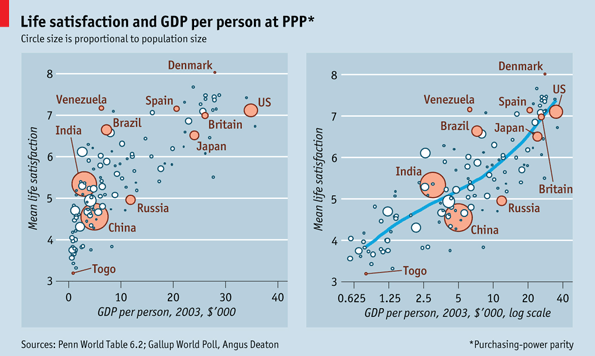
ANGELA CHEN – SEPTEMBER 6, 2023
EDITOR: MAHATHI KATTAMURI
The field of behavioral economics is experiencing an intellectual heyday as we speak; books such as Thinking, Fast and Slow and Freakonomics are topping bestseller lists, governments around the world are creating Behavioral Insights teams, and terms such as “cognitive bias” and “mental accounting” are becoming more and more commonplace in casual conversation.
However, while principles like bounded rationality and sunk cost fallacy are interesting in theory, what most people (aka non-economists) actually care about is whether these concepts affect me?
The short answer to this question is absolutely. But for you intellectuals who want the long answer, we’ll first need to travel back in time.
History and Evolution of the Field
Before the 20th century, economic models focused on perfectly rational human beings who always selected the best possible choices for themselves. Additionally, the leading minds at the time looked down on incorporating psychology into their overly mathematical field, since they believed that the study of psychology was unreliable and unscientific.
However, with the rise of cognitive psychology in the 1960’s, Israeli psychologists Amos Tversky and Daniel Kahneman developed several theories which explained biases in the way people think. For example, people believe shark attacks and plane crashes are more common than in reality because of the availability heuristic, the idea that people use easily recallable information instead of actual data to calculate the probability of events. Similarly, people would rather support a policy that maintains 90 percent employment instead of one that ensures 10 percent unemployment, despite being the same, because of prospect theory, the idea that people would rather avoid losses than gain the same amount.
As a result, when Richard Thaler applied the works of Tversky and Kahneman to disprove the theory of rational economic decision-making in the 1980’s, he founded the field of behavioral economics. Thaler identified consistent ways in which people acted irrationally due to differing social preferences, emotional states, time preferences, and cognitive biases, creating a new framework to explain our often irrational decision-making.
As this idea became more popular, a slew of research papers and behavioral experiments during the turn of the 21st century further explored the causes of irrational decision-making. Notable papers include George Akerlof’s analysis of procrastination, Daniel Kahneman’s research on anchoring bias, and Ernst Fehr & Simon Gächter’s theory on altruistic punishment, which all served to further develop the field.
Applications of Behavioral Economics: Marketing
As society began to learn of behavioral economics, savvy business owners soon realized its applications to marketing and consumer behavior. More specifically, they focused on how they could encourage people to buy more of their products?
For example, if you’ve been online shopping recently, you’ve probably noticed the plethora of buy now, pay later (BNPL) services like Afterpay, Klarna, and Affirm appearing at the checkout page. These services take advantage of consumers’ time preferences, or their tendency to view future payments as less expensive as current payments. After all, wouldn’t you prefer to start using that brand new iPhone now for only a fifth of its price instead of saving up to finally buy it later? As a result, it’s no surprise that consumers spend 10 to 40 percent more through those services, increasing company profits and prompting warnings of consumer overspending by the Consumer Financial Protection Bureau.
Similarly, have you ever chosen a more expensive product over a cheaper version, just because you reasoned that its higher price must mean it’s higher quality? If you answered yes, you’re not alone, since behavioral economists have labeled this behavior as irrational value assessment. As a result, business owners have discovered that sometimes increasing their prices will actually increase their sales, or even customers’ reviews of their product! One famous example is when members of the prestigious Stanford Wine Club ranked a supposedly $45 bottle of wine significantly higher than a supposedly $5 bottle of the exact same wine.
Likewise, the concept of price anchoring is everywhere around us. Chegg starts with its most expensive option when listing its subscription plans because their cheaper plans seem like a better deal in comparison. Prices for eggs are $7.99 instead of $8 because consumers view them as “around $7,” which is significantly cheaper than $8. Retailers mark the original price of their jackets at $240 so their current price of $60 (at a 75% discount!) seems like a better deal.
Alright, let’s give one last example. What do Amazon Lightning Deals, Starbucks limited-edition Pumpkin Spice Lattes, and those annoying mailbox flyers (the ones yelling about the $200 your inefficient thermostat is costing you) have in common? They all utilize loss aversion, or consumers’ fear of losing out, to encourage you to buy their product now.
Ethical Considerations
These examples bring up major ethical questions. How much of our choices really are our own? What protects our freedom to choose? Can we trust companies to not go too far in manipulating our decisions? Do organizations purposely maneuver people towards harmful choices?
Unfortunately, the answer to the last question, in some cases, is yes.
In 2014, Facebook came under fire for changing thousands of its users’ feeds to contain more gloomy content as part of an experiment about emotional contagion in social media. The study showed that those users became more unhappy, indicating that Facebook negatively influenced its users’ emotions without their consent.
On the other hand, Uber has been experimenting with behavioral economics techniques in its app to combat shortages and encourage its drivers to work longer hours, sometimes even in low-fare areas. For example, one recent pop-up imitates the surge pricing graphic, pushing drivers towards certain areas under false impressions of higher fares. Similarly, Uber’s automatic queuing of subsequent rides, gamification strategies, and pop-ups whenever drivers attempt to close the app have prompted concerns. While these changes have decreased wait times and improved customer experiences (as well as company profits), some accuse the company of taking advantage of gig workers, who already lack the typical benefits and protections standard workers receive.
Nudge: Creating Ethical Systems for Good
Fortunately, there has been good news. Recently, behavioral economics research has dramatically shifted towards ways its concepts can solve societal issues. A major cause of this trend is Richard Thaler’s 2008 book Nudge: Improving decisions about health, wealth, and happiness, which popularized his nudge theory and the concept of libertarian paternalism.
Nudge theory focuses on deliberately designing the presentation of choices to steer, or nudge, people towards a certain result. This ties into the idea of libertarian paternalism, in which institutions guide behavior towards socially beneficial choices while still respecting individuals’ freedom of choice.
Applications of Behavioral Economics: Policy Solutions for Retirement Savings and Organ Donation
For example, through the Save More Tomorrow plan, Thaler proposes using nudges to tackle the severe lack of retirement savings among millions of Americans. The plan’s users are asked to commit in advance to saving a certain proportion of their current and future salaries, simplifying cumbersome retirement calculations and circumventing enrollees’ present bias. Additionally, savings rates will automatically increase with each pay raise, avoiding problems of procrastination. Lastly, in his book, Thaler suggests also implementing automatic enrollment of savings plans to further magnify its effects.
As a result of the idea’s popularity, the Pension Protection Act of 2006 enshrined into law the Save More Tomorrow plan’s core principles, while companies such as Vanguard have incorporated its ideas into its 401(k) plans, boosting the savings of around fifteen million Americans.
In a similar vein, Thaler recommends using mandated choice to solve the US organ donation shortage. This requires people to answer whether they are willing to participate in organ donation by law, typically when registering for their driver’s license. Mandated choice simplifies the process for those interested in donating, since their registration will be incorporated into something they have to do anyways, instead of a separate process, as is the case in most states right now.
Interestingly enough, an even more effective solution called presumed consent exists, in which people are automatically registered as donors, but may opt-out at any time. Many countries like Spain and Croatia who use this system have much higher donation rates than the US. In the case of Austria, after implementing presumed consent, registration rates have increased to 99 percent (compared to 54 percent in the United States). However, because this policy is so controversial in the United States, it has not been considered as a feasible solution.
Moving Forward: An Exciting Time Ahead
With the revolution of nudge theory, behavioral economics policy solutions are being seriously considered by governments around the world. Former President Obama enacted an executive order about its importance, Australia created the Behavioral Economics Team of Australia (BETA), and former UK Prime Minister Boris Johnson even relied on nudges to fight the coronavirus pandemic.
Current research in the field overwhelmingly focuses on applying nudges to a wide variety of problems, including climate change, healthcare, criminal justice, and even non-profit fundraising. The possibilities are endless, and behavioral economics has boundless potential for improving our lives as we know it.
Featured Image Source: Creative Commons
Disclaimer: The views published in this journal are those of the individual authors or speakers and do not necessarily reflect the position or policy of Berkeley Economic Review staff, the Undergraduate Economics Association, the UC Berkeley Economics Department and faculty, or the University of California, Berkeley in general.



